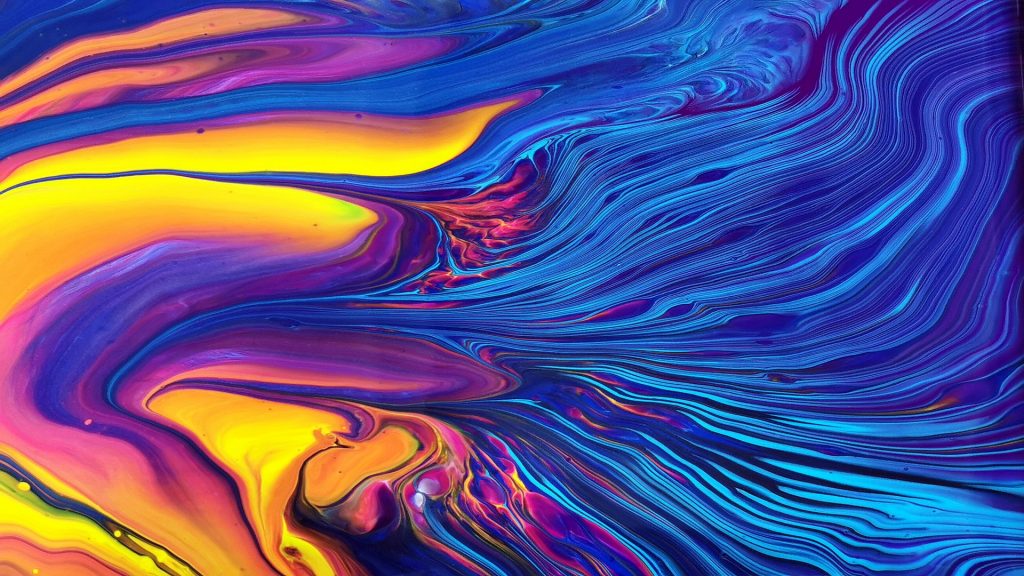
In case you haven’t caught up with it yet, ALGA’s ‘2024 National State of the Assets Report: future proofing our communities’ was released a week ago. You can download a copy of the Summary and Technical reports here:
Sometimes reviewing a report is a chore. This was a pleasure. It ticked all the boxes: it was very readable; honed in on the important issues and provided useful, verified data. It would be impossible for anyone to read this report and not gain a great appreciation for the pressures being faced by all councils, but especially smaller and regional councils, as they face the combined effect of asset ageing, climate change, increasing consumer expectations and more stringent regulations – and very little access to funding.
My overwhelming reaction, and it may be yours too, was to realise that better asset management is unlikely, by itself, to be sufficient. And this may be the most important take away. Asset Management is often presented as a panacea, it is not – but it is where we must start, for if we cannot manage effectively what we already have, how can we ask for more?
The good news is that this ALGA report indicates improvements are being made. How we express data has a major effect on how it is received. I particularly appreciated having infrastructure costs expressed per ratepayer. There was a time when we felt that large aggegate numbers had more impact and everybody tried to make their future costs as big as possible ‘to be impressive’, but expressing costs on a small personal scale, i.e. per ratepayer, enables greater understanding. We are more able to feel it. I also like the way that averages were dealt with. When I started work on life cycle renewal costs, realising that averages concealed more than they revealed, I put a lot of effort into calculating full age distributions. But ALGA has realised we don’t need to do all that work if we supplement the average with an indication of the extent of the most urgent of renewals. Very sensible. Indeed the entire report is very sensible. There is a lot of data, but it is carefully designed not to overwhelm.
It is a useful base for arguing for change. Change in the way we fund councils, change in the way we record and use depreciation figures are the first two that come to mind. What else would you like to see changed?

“ It was great to celebrate Asset Management’s 40th year with many old friends and new, a celebration that started with AM Peak in Adelaide and finished with the IPWC Conference in Melbourne. At both ot these gatherings about 30% of the attendees were women, mostly young women, such a very good sign for the future of AM. Also good signs of ethnic diversity. I recalled the beginning of both associations and so had occasion to reflect on how they have grown and developed over the years.
In between these events I was able to spend time in Brisbane and meet with AM friends and colleagues of #Chris Adam at Stantec and #Joe Mathew at QUT, while enjoying the company of my long time friend #Kerry McGovern. Then it was on to the Blue Mountains to meet #Lis Bastian and to stay with #Jeff Roorda, Infrastructure Director with the BM City Council. This was shortly after a major landslide had caused the collapse of the only road into Megalong Valley. A new temporary road was built within days but was only able to cope with light traffic putting Jeff in the position of dealing with simultaneous environmental, economic and social disasters in this very beautiful and highly sensitive area. Then just a day ago came news of a sink hole in a Sydney suburb, the result of heavy rains and it is likely that many more of us will be dealing with triple disasters soon.
The truth is that across the country we are facing major challenges and major change and much that we think we know now needs serious reconsideration. I am now taking a Sabbatical or “Time Out” for the next six months to research and reflect on what those of us in the Infrastructure and Asset Management game can do, but I am happy to receive your ideas If you are also concerned.
PS. I have today done what I should have done weeks ago and that is to upload all the remaining chapters of Norman Eason’s “Maintenance and Asset Management Information Systems“. Now this link will get you the lot! Do have a look. I am sure that you will be surprised by how much you can still learn from work that was written 25 years ago! Then the idea was to develop understanding so we tackled the ‘why’ of different issues. Today the emphasis has been on the ‘how’. But the ‘Why’ is still critically important – because likely different .

“What’s the first step to a good Strategic Asset Management Plan (SAMP)? A bad SAMP…”
My ex-colleague Ark Wingrove’s saying has resonated with clients since he first coined it. You do not have to wait for perfection; the important thing is to start, knowing you can improve as you go.
It works not just because it’s true. Just having someone tell you you won’t get everything in Asset Management perfect first time liberates us to try. Otherwise – and this surely tells us something about the asset culture we pick up, and need to change – we get frozen in the headlights of needing to be right.
It’s a profound truth of AM that you will never know enough about the future; and yet you still have to have a strategy, you still have to plan, you still have to make decisions that matter. And so inevitably we will get some important things wrong.
The approach that the AM documents and processes we produce are all iterative is, of course, built into the diagrams, the 6 Box Model and the flow of ISO 55000, continuous improvement and the ’learning loop’ of Plan-Do-Check-Adapt. The idea that, above all, we can’t leap straight from muddle to highly sophisticated Asset Management Planning has long been recognised in Australasia. We have to build, step by step, our planning evolving with our increasing understanding.
But it just struck me that it’s not simply how we improve things as we know more. The real blocks are thinking we know more than we do at the start, and the fear that we will be exposed for not knowing enough – the toxic aspects of being an expert.
Years ago Penny Burns came in to take my Sydney team through scenario planning. The real achievement of this was to move everyone away from their confidence. From believing they could ever be certain about the future.
In an exercise around understanding our levels of uncertainty in risk training this week, someone asked – tongue in cheek – how we could ‘win’.*
The urge to be right is natural, I guess, but it also goes with all sorts of baggage. That we won’t even start unless we can be certain. That it is better not to try than to run the risk of being wrong.
As though, for example, a strategy for Asset Management is a test we have to pass.
The principle of evolving, getting better as we go but never reaching 100% certainty. What examples of positively ‘embracing uncertainty’ have you seen in practice?
*Calibration training based partly on the work of Douglas Hubbard, see his The Failure of Risk Management. If you have never come across this, aiming to show off that you’re right that will ensure you don’t get it right. (And even telling people this doesn’t help them, at least the first time around.)

With the beginning of a new year, most of us are thinking about what we plan to do in 2023 – we consider our aims, objectives, goals and targets.
I am reminded of a conversation, some years ago, between Françoise Szigeti, who was then Vice President, International Centre for Facilities, Ottawa, Canada and Helen Tippett, then Emeritus Professor, Faculty of Science, Victoria University, New Zealand.
Françoise observed that the same words tended to be used to convey totally different meanings, and Helen came up with the following that she uses to help her students keep the meanings straight.
- “You AIM for the stars.
- Your OBJECTIVE is to land on the moon.
- Your GOAL is to build a rocket with enough fuel to get you there at an affordable cost.
- Your TARGET is be ready to launch in two years.”
Got It?

Yes, it may be frantic now as we try to finish up all those things we promised we would have done ‘by the end of the year’, but soon it will be Christmas and, hopefully, we can relax and catch up on reading more, as we also promised ourselves, but didn’t get done.
If this sounds like you, may I recommend a book that will have you laughing as well as learning? In “Corporate Punishment”, James Adonis, takes apart 38 of the most common – and most annoying – business clichés, such as ’employees are our greatest asset’, ‘think outside the box’, ‘pick the low hanging fruit’, and the ever-present but abysmally misleading ‘what gets measured, gets done’. At the very least, you will avoid the embarrassment of using them yourself.
The cleverness of the cover illustration encouraged me to pick this up and start reading and after that, the author kept me going until the very last page. I don’t know about you, but it is the rare book I read right through to the end nowadays, so this is a rare recommendation.
AM Clichés?
Reading these general business clichés reminded me that we have our own in asset management – perhaps the leading one being ‘there are no votes in maintenance’. If there were a book of AM Clichés, what clichés would you suggest should be included?

What is a better question?
The tag line for Talking Infrastructure is ‘generating better questions’. Ruth’s brilliant last post reminded me that I had never defined a ‘better’ question. So let’s do that.
Very briefly, a ‘better’ question is one where the answer creates new information, or in the words of Michael Port (Heroic Pubic Speaking) it’s a question that Google can’t answer!
More than that, it generates new capability, allowing us to do new things, or old things in a better way.
Are these ‘better’ questions?
The first volume of our story of Asset Management, ‘Asset Management as a Quest’ consists of a search for the answers to the following series of questions. (You can read Part One of this volume – and our search for answers to the first two of these questions – here)
1: How much does it cost South Australians to get their water services?
2: What is the likely cost and timing of renewing water assets?
3: What is the cost and timing of renewal for all state infrastructure: Public Housing, Hospitals, Schools and Colleges, Highways,Transit, Power and Water?
4: What can be done to contain costs?
5: How do we instill an AM mindset?
6: How do we spread the word about asset management and its benefits?
7: What are the consequences if AM is not understood?
8: Are our tools and data up to the challenges we now face?
9: How do we advance the narrative but also keep it focused?
10: How did NSW move the story forward and what can we learn from its actions?
Your View
Q: Are these ‘better’ questions? Why or why not?
Q: What other questions were being considered in this early perid of our history (1984-1993)?
Asking Questions
And, if you would like to know more about question asking, here are two great books
‘Questions are the Answer’ by Hal Gregersen, and
‘Curious’ by Ian Lewis (recommended by Lou Cripps after reading Ruth’s post)

In writing Building an Asset Management Team, Lou Cripps and I looked at the skills an effective Asset Management team requires – both technical and business understanding, good grasp of front-line experience, both system and structured thinking, a longer term perspective, emotional intelligence and communication skills, embracing uncertainty and the tools to think about risk, integrity, and enough leadership ability to get others to buy into a new way of working.
Good infrastructure Asset Management requires a tricky combination of attributes.
Lou came up with the image of the platypus, that is very rare and not to be found on most continents.
Instead of searching for an amphibious, duck-billed, otter-footed, egg-laying, venomous mammal that locates prey through electroreception, it’s easier to provide all the qualities we need through a complementary team.
But we still love platypuses. Watch out for more of them in the next ten days!

When I managed a small subsidiary company in the 1990s, I read a book by ex ICI chair John Harvey Jones on values. He said – and I am paraphrasing wildly – that any useful organisational value must have an opposite which would work in other circumstances, otherwise it’s so much mom-and-apple-pie stuff you can’t disagree with, but which does not motivate or drive very much, either.
When my team tried articulating our collective values, we all agreed on loyalty – which the marketing men said was not an appropriate marketing slogan, so I knew we were on to something. What could be (in other contexts) a useful opposite? Impartiality, for example. Loyalty was something we felt, and it also turned out to be something our clients could feel (and appreciate). Someone else could contribute impartiality.
As we face a puzzling current widespread refusal of North American infrastructure agencies to set clear SMART targets, we have wondered aloud if it’s because they don’t want anything they could fail at. I begin to wonder if it’s worse than this, a lack of clear purpose or value at all.
I think I have just spotted the worst yet: a transportation agency that’s adopted ‘We Make People’s Lives Better’. Their top leadership are very proud of it, since who doesn’t want to Make People’s Lives Better? The detail of what counts as better, which people, how we will do this – and what we do if one lot of people want something that would adversely affect another group of people? Well, don’t be negative, we can work that all out later. (And don’t even bring up all the critiques of naïve utilitarianism.)
Do we want a bus company to ‘make our lives better’, or do we just want them to concentrate on running an efficient and comfortable bus service?
For the moment, we asset managers can play the game of what, if anything, would not fit under this rhetoric. How could it even in theory rule out a bad option?
Yeah, it was a high-priced consultancy that facilitated this, but why does this even feel right to the executive, apart from being a meaningless feelgood statement?
Is it a triumph of the marketing men, or a complete dereliction of duty?

Every infrastructure project causes damage – to society, to the environment. We know this. A new road means loss of green space. It disrupts existing commerce and communities. Steel and cement are toxic to the environment. We accept this damage as a necessary cost of achieving a larger community good.
For too long, we have accepted this ‘larger community good’ to be the short term jobs that are created. But as shown in the last two posts, not only is this jobs gain illusory, it causes its own damaging distortions in the economy. Construction workers might gain, but other workers lose.
So if we are to support a new infrastructure project it must be because of the greater, ongoing benefits that the infrastructure will provide – after it has been constructed. For evidence based decision making, this is where we must seek our evidence.
How do we do this? What sort of evidence should we seek?

How often do you see arguments such as that spending, say, $100m will create Y,000 jobs? Rarely do we even question the logic, let alone the arithmetic. But we should do both. For if inserting $100m into the economy creates jobs – and it does! – then it must be equally true that extracting $100m reduces jobs. It follows that if the Government is running a balanced budget, then money into the economy through government expenditure is equal to money taken out of the economy through taxes to finance this and there is no net increase in jobs. The situation is worse if the Government is aiming at a budget surplus, for then more jobs are lost than are created.
The jobs created are nicely gathered together and visible for the project at hand, they are even amplified by media exposure, but what you don’t see are the jobs that are lost, for these are spread across the economy.
Let’s face it, to keep its budget under control it will either have to cut back on other expenditure or raise taxes and charges. (Think back to the last ‘stimulus’ bill, is that not what happened a year or so later? The government encouraged construction then later reduced funding affecting maintenance amongst other things.)
And as to the secondary round of expenditure – by which those receiving the first tranche of largesse are expected to go out and spend, thus creating more jobs, what about the secondary effects of the jobs that are lost?

Recent Comments